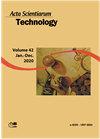Mixture Design of Experiments as Strategy for Portfolio Optimization
IF 0.6
4区 综合性期刊
Q3 MULTIDISCIPLINARY SCIENCES
引用次数: 0
Abstract
Portfolio analysis is widely used by financial investors to find portfolios producing efficient results under various economic conditions. Markowitz started the portfolio optimization approach through mean-variance, whose objective is to minimize risk and maximize the return. This study is called Markowitz Mean-Variance Theory (MVP). An optimal portfolio has a good return and low risk, in addition to being well diversified. In this paper, we proposed a methodology for obtaining an optimal portfolio with the highest expected return and the lowest risk. This methodology uses Mixture Design of Experiments (MDE) as a strategy for building non-linear models of risk and return in portfolio optimization; computational replicas in MDE to capture dynamical evolution of series; Shannon entropy index to handle better portfolio diversification; and desirability function to optimize multiple variables, leading to the maximum expected return and lowest risk. To illustrate this proposal, some time series were simulated by ARMA-GARCH models. The result is compared to the efficient frontier generated by the traditional theory of Markowitz Mean-Variance (MVP). The results show that this methodology facilitates decision making, since the portfolio is obtained in the non-dominated region, in a unique combination. The advantage of using the proposed method is that the replicas improve the model precision.组合优化策略中的实验混合设计
投资组合分析被金融投资者广泛用于寻找在各种经济条件下产生有效结果的投资组合。马科维茨通过均值方差法开始了投资组合优化方法,其目标是使风险最小化,收益最大化。这项研究被称为马科维茨平均方差理论(MVP)。最优的投资组合除了具有良好的分散性外,还具有良好的回报和低风险。本文提出了一种获得期望收益最高、风险最低的最优投资组合的方法。该方法使用混合实验设计(MDE)作为建立投资组合优化中风险和收益非线性模型的策略;MDE中的计算副本捕捉序列的动态演化;利用香农熵指数更好地进行投资组合分散;期望函数对多个变量进行优化,使期望收益最大,风险最低。为了说明这一建议,用ARMA-GARCH模型模拟了一些时间序列。结果与传统的马科维茨均值方差(MVP)理论生成的有效边界进行了比较。结果表明,该方法有利于决策,因为投资组合是在非主导区域以唯一组合获得的。使用该方法的优点是副本提高了模型的精度。
本文章由计算机程序翻译,如有差异,请以英文原文为准。
求助全文
约1分钟内获得全文
求助全文
来源期刊

Acta Scientiarum-technology
综合性期刊-综合性期刊
CiteScore
1.40
自引率
12.50%
发文量
60
审稿时长
6-12 weeks
期刊介绍:
The journal publishes original articles in all areas of Technology, including: Engineerings, Physics, Chemistry, Mathematics, Statistics, Geosciences and Computation Sciences.
To establish the public inscription of knowledge and its preservation; To publish results of research comprising ideas and new scientific suggestions; To publicize worldwide information and knowledge produced by the scientific community; To speech the process of scientific communication in Technology.
 求助内容:
求助内容: 应助结果提醒方式:
应助结果提醒方式:


